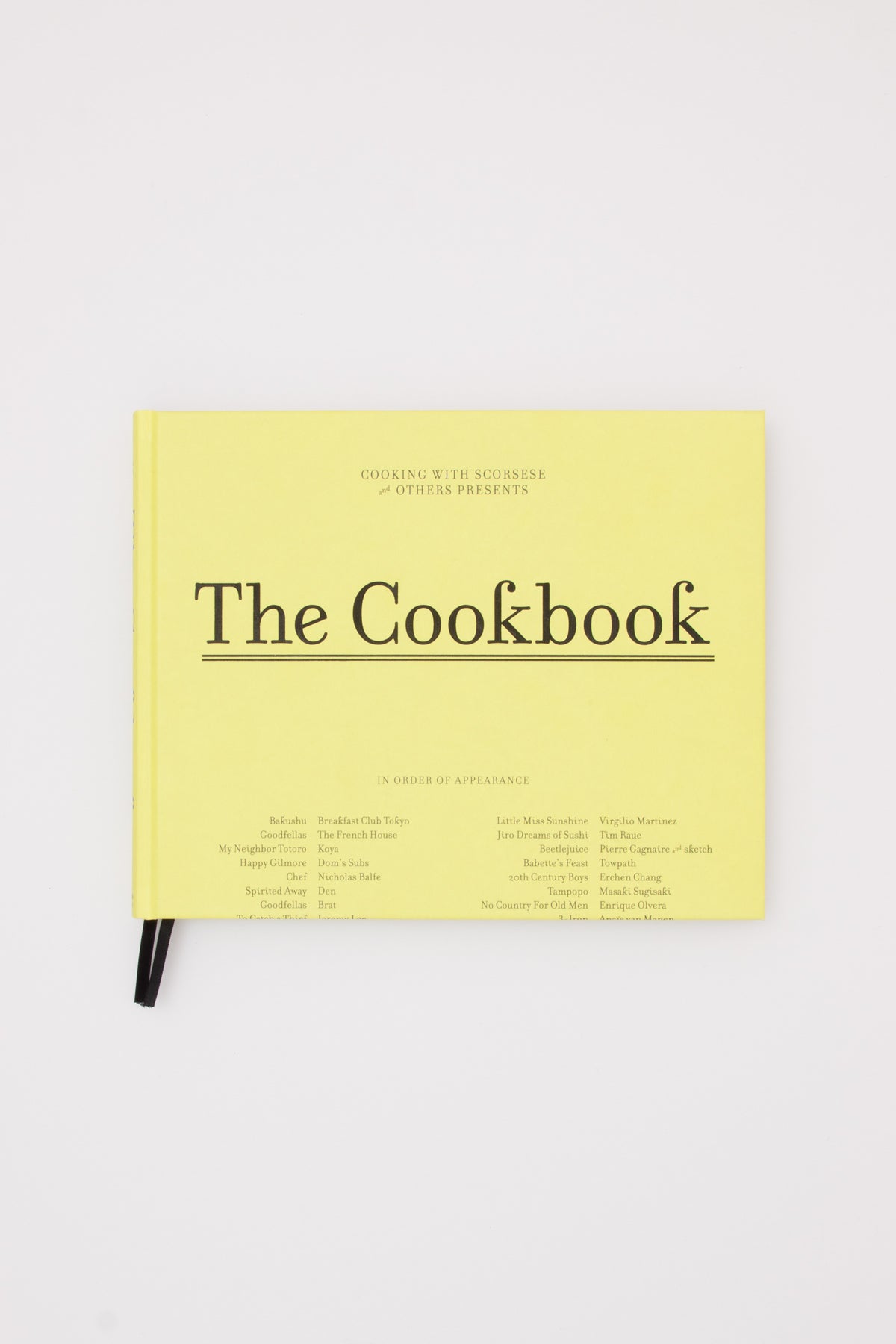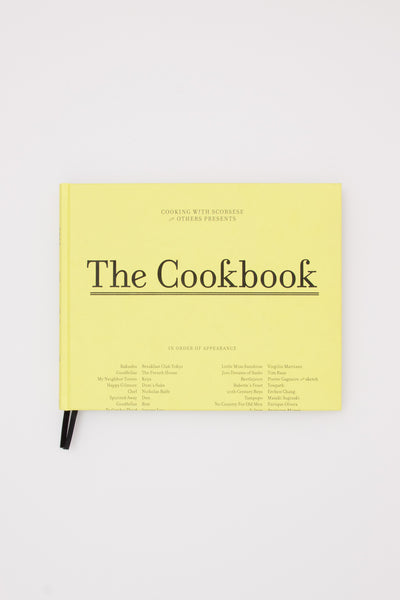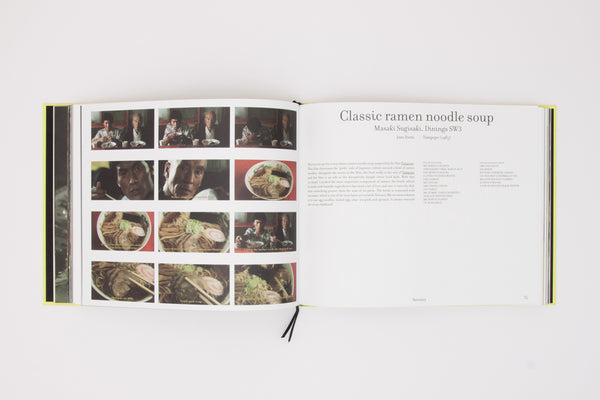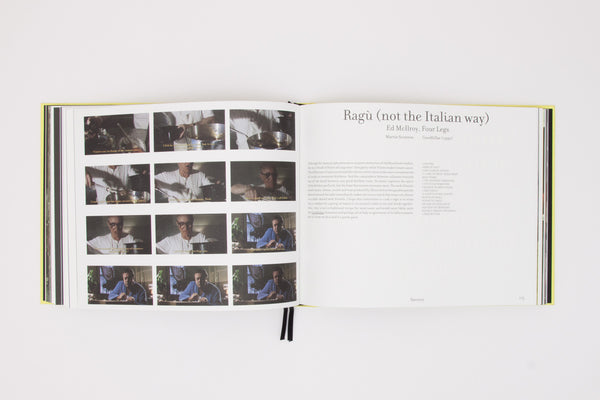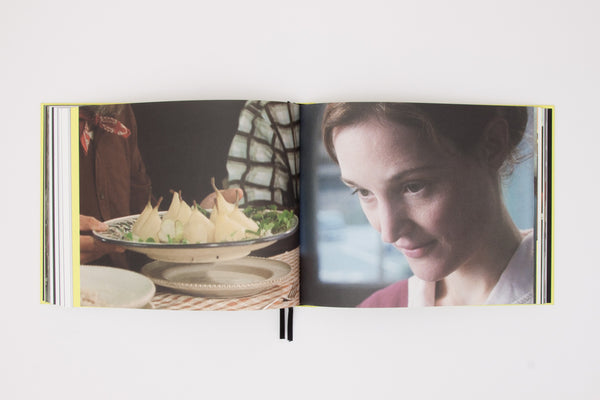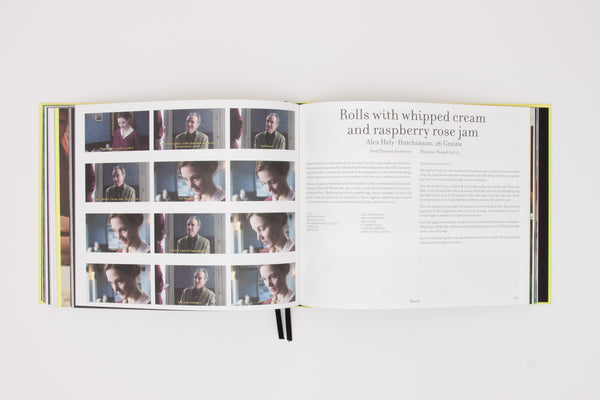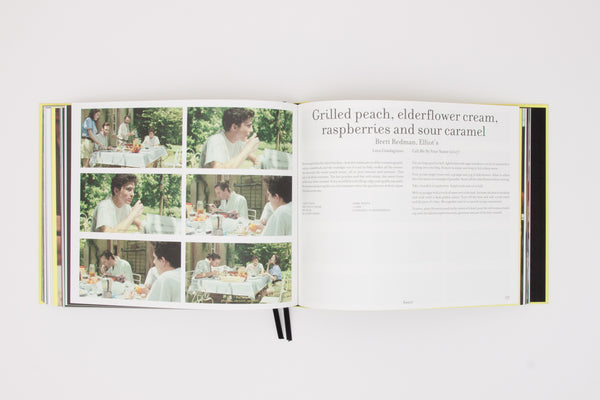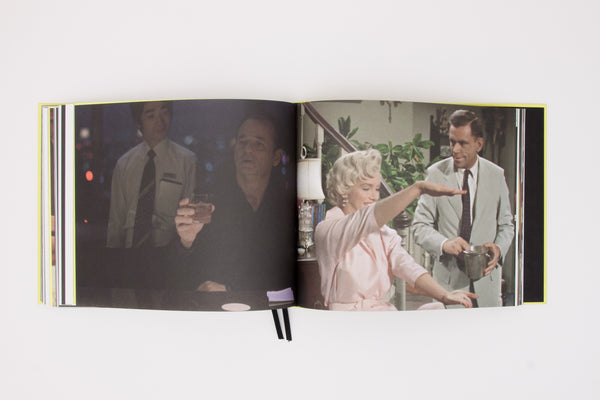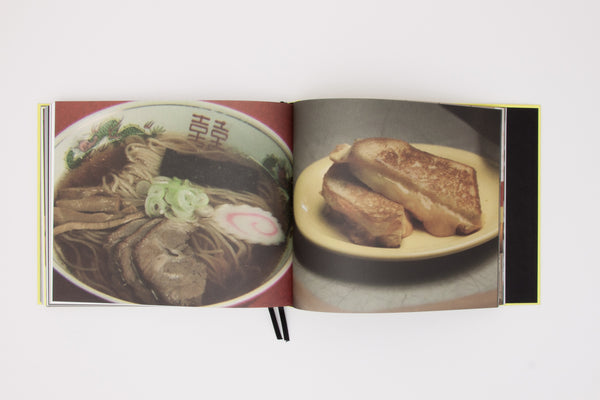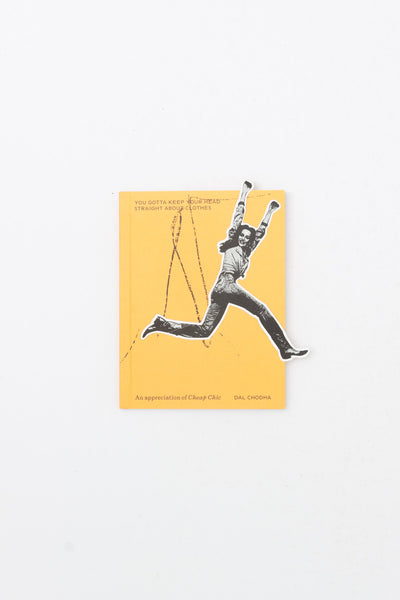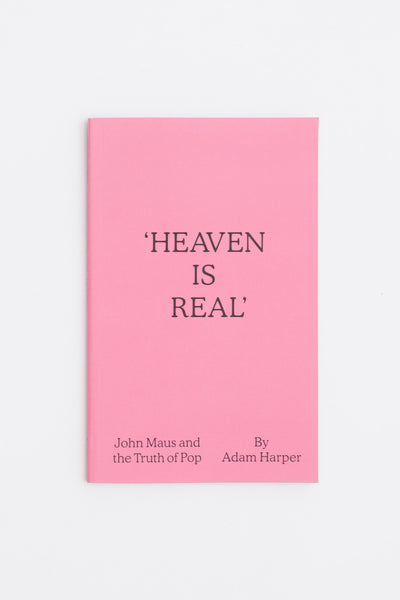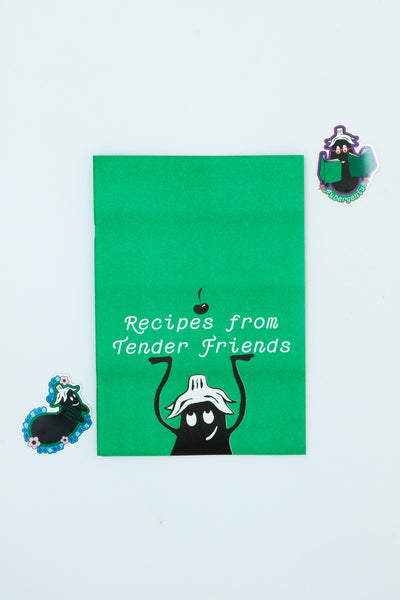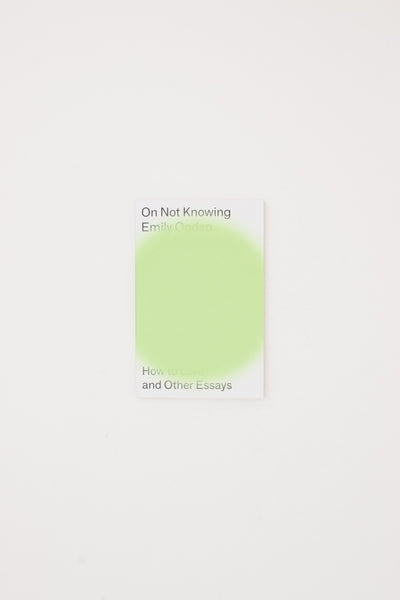Cooking with Scorsese - The Cookbook
Initially inspired by an old university brief, Kenjiro Kirton began investigating design rituals - the meditative and monotonous continuation of a singular task or action, repeated daily. The idea was to see how they could shape our approach to work in the studio. Taking our cue from projects like On Kawara's Date Paintings and Martino Gamper's 100 Chairs in 100 Days, our ritual started as a simple list of films. We collected films we had all remembered and cherished over the years, films with scenes that stayed imprinted on our minds, that influenced the food we wanted to eat as kids, the recipes we tried to recreate in our student kitchens and the rituals we instilled into our homes as adults. Screenshot after screenshot, we started to collect these memories and scenes. Our collection grew until it started to tell a story and organically began to take its own shape.
Scorsese soon became our most influential inspiration for this project. His use of food as a tool resonated with us, as well as how he chooses to depict it in many different ways, from extravagant feasts to squalid table settings, in order to build characters. 'Food tells you everything about the way people live and who they are,' Scorsese said about this practice. Whether it's DiCaprio throwing lobsters at waiters in The Wolf of Wall Street or Travis Pickle's 'black coffee and apple pie with a slice of melted yellow cheese' in Taxi Driver, the concept of food, its commonality and relevance to pretty much anyone, has allowed his films and their characters to transcend time, culture and audiences. Cooking with Scorsese, as the project became known, has morphed into a series of books, film nights and occasional supper club.
Over the years, it has taught us about the circularity of food and film and how each medium has in turn fed (for want of a better word) into each other. The reality is that as much as directors are inspired by and use food to help them build their narratives, chefs take from films in the same way. From Wong Kar-wai's intoxicating scenes in In the Mood for Love to Wes Anderson's delicate pastries in The Grand Budapest Hotel, restaurants have embedded the gestures, imagined aromas, flavours and memories from these scenes into their menus.
The Cooking with Scorsese books became manuals for the examination of how directors have used food as a device on screen. For this cookbook, we have invited chefs to examine filmic moments that bring them culinary joy and create something in return. Its release brings us full circle, connecting the narratives on both sides of the screen with everyday kitchens and tables. We hope you will take the time to read the introductions by our contributors. The most enjoyable and interesting part of collating the recipes has been discovering first-hand the moments that resonated with each chef. Through food they have been able to capture and keep those moments alive, in the same way a director captures and creates through film.
Hato Press, 2021
Hardcover, 208pp
230 x 280 mm

